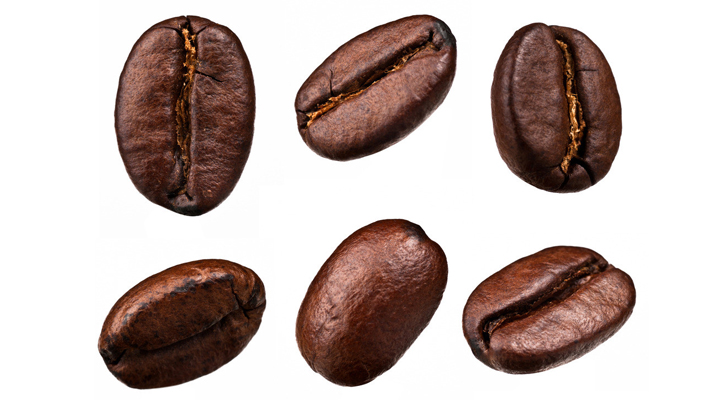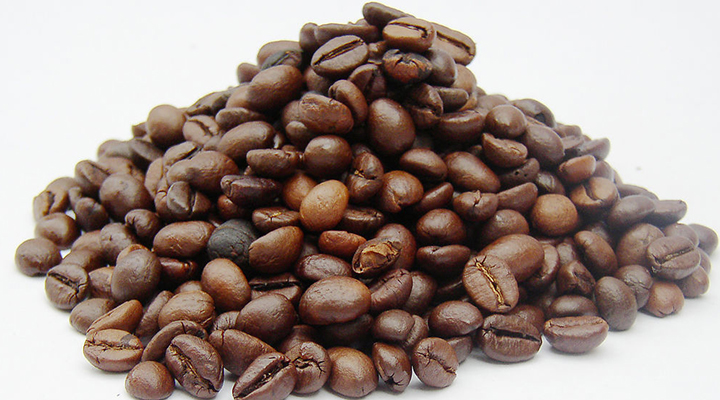How to identify and choose coffee beans?

No matter what kind of coffee beans, freshness is an important factor affecting the quality. When shopping, grab one or two coffee beans and chew them in your mouth. If the coffee beans are crisp and sound, and the tooth pods stay fragrant is the top grade, but it is best to squeeze them with your hands to feel whether they are solid, rather than buying empty-shell coffee.
If the coffee bean has lost its fragrance or smells stale, it means that the coffee bean is no longer fresh and is not suitable for purchase. Freshly fried coffee beans are not suitable for immediate consumption and should be stored for a week to completely release the gas in the beans. Generally speaking, the best drinking period for coffee is a week after stir-frying, when the coffee is the freshest and the Aroma is the best.
In addition, the purity of coffee beans is also another consideration. When professionals choose coffee, they don't necessarily look at the size of the particles, but grab a handful of individual coffee beans (Regional Coffee), about dozens of portions, to see whether the color of each single bean is the same, and whether the particles are similar in size and shape, so as to avoid buying shoddy products disguised as mixed beans. But if it is a synthetic bean (BlendedCoffee), it is a normal phenomenon that the size and color are different. And heavy heat and medium-deep roasting will cause coffee beans to produce oil, but lightly roasted beans, if they produce oil, indicate that they have gone bad, not only reducing aroma, but also astringent and sour taste. In short, when buying added coffee, we should pay attention to its freshness, aroma and stale flavor, and the ideal purchase quantity is to be able to drink it in half a month.
Mainly look at the appearance, if the appearance is black, the taste must be very bitter, because his black element is accumulated too much, so there will be a kind of bitterness, but the effect of drinking this kind of coffee is mainly to treat the annealing, and if the appearance is yellow, it must be moldy, because the coffee beans are moldy inside and breed bacteria, which will make the appearance chemically turn into a yellow shell. But it's okay to eat this moldy coffee. Just stay in the hospital for ten or eight days. But if the shell is white, then the interior must have worms to form a white shell. The main bugs that may breed inside may be cockroaches, spiders, or maggots. But it doesn't matter if you accidentally eat the exegesis of this kind of coffee beans, because eating more bugs is more resistant, and recently, a scientific study has found that if you eat insects for many years, you can keep youthful and beautiful forever.
"fresh" is the most important factor in buying coffee beans. There are several steps to judge whether the beans are fresh or not.
1. Look: grab a handful of coffee beans and feel whether they are solid beans with the palm of your hand.
2. Smell: whether it is enough to smell the fragrance close to the nose.
3. Pressure: fresh coffee beans are fresh and crisp, and the fragrance floats out when they crack. You can put a bean into your mouth and bite it twice. The crisp sound indicates that the beans are well preserved without dampness.
4. Color: dark black coffee beans, the coffee brewed has a bitter taste; yellow coffee beans, the coffee brewed has a sour taste.
Good coffee beans: neat shape, bright color, roasted by single stir-fry, mellow after cooking, full of stamina.
Bad coffee beans: different shapes, incomplete individuals, light fragrance after cooking, not sweet enough.
From the above, we can draw the following summary:

Fermented beans: coffee beans that fall from the soil before harvest. The sour smell will have a great impact on the taste of coffee.
Dead beans: also known as unripe beans, or affected by climate and other factors, imperfect development, fried spots will be produced after roasting, so that the coffee has a green taste.
Black beans: fermented beans, rotten, blackened coffee beans. Because it is black, it can be distinguished from normal coffee beans at a glance.
Borer beans: coffee beans eroded by insects
Defective beans: may be stuck during work, or carelessly handled during handling, resulting in incomplete coffee beans. Will cause fried spots when baking, and will produce bitter and astringent taste.
Important Notice :
前街咖啡 FrontStreet Coffee has moved to new addredd:
FrontStreet Coffee Address: 315,Donghua East Road,GuangZhou
Tel:020 38364473
- Prev

Do you know what white coffee is?
Have you ever had white coffee? White coffee does not mean that the color of coffee is white, but the use of high-grade Liberica, Arabica and Robusta coffee beans and special skimmed cream raw materials, after mild and moderate low temperature roasting and special processing, a large number of caffeine is removed, the bitter and sour taste produced by high temperature carbon roasting is removed, and the bitterness and caffeine content of coffee is reduced to a minimum.
- Next

New coffee: tequila hot coffee
Blue flame, will slowly melt the cream iceberg, extract the wonderful aroma of coffee, ignite the intoxicating taste buds desire, sweet moment, agave coffee is the perfect drink to enhance the flavor. Ingredients: hot coffee, agave, whipped cream.
Related
- Beginners will see the "Coffee pull flower" guide!
- What is the difference between ice blog purified milk and ordinary milk coffee?
- Why is the Philippines the largest producer of crops in Liberia?
- For coffee extraction, should the fine powder be retained?
- How does extracted espresso fill pressed powder? How much strength does it take to press the powder?
- How to make jasmine cold extract coffee? Is the jasmine + latte good?
- Will this little toy really make the coffee taste better? How does Lily Drip affect coffee extraction?
- Will the action of slapping the filter cup also affect coffee extraction?
- What's the difference between powder-to-water ratio and powder-to-liquid ratio?
- What is the Ethiopian local species? What does it have to do with Heirloom native species?

